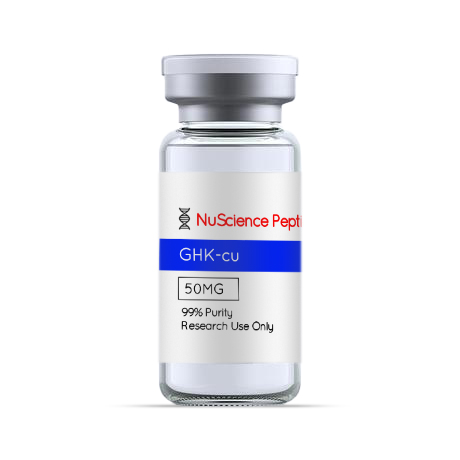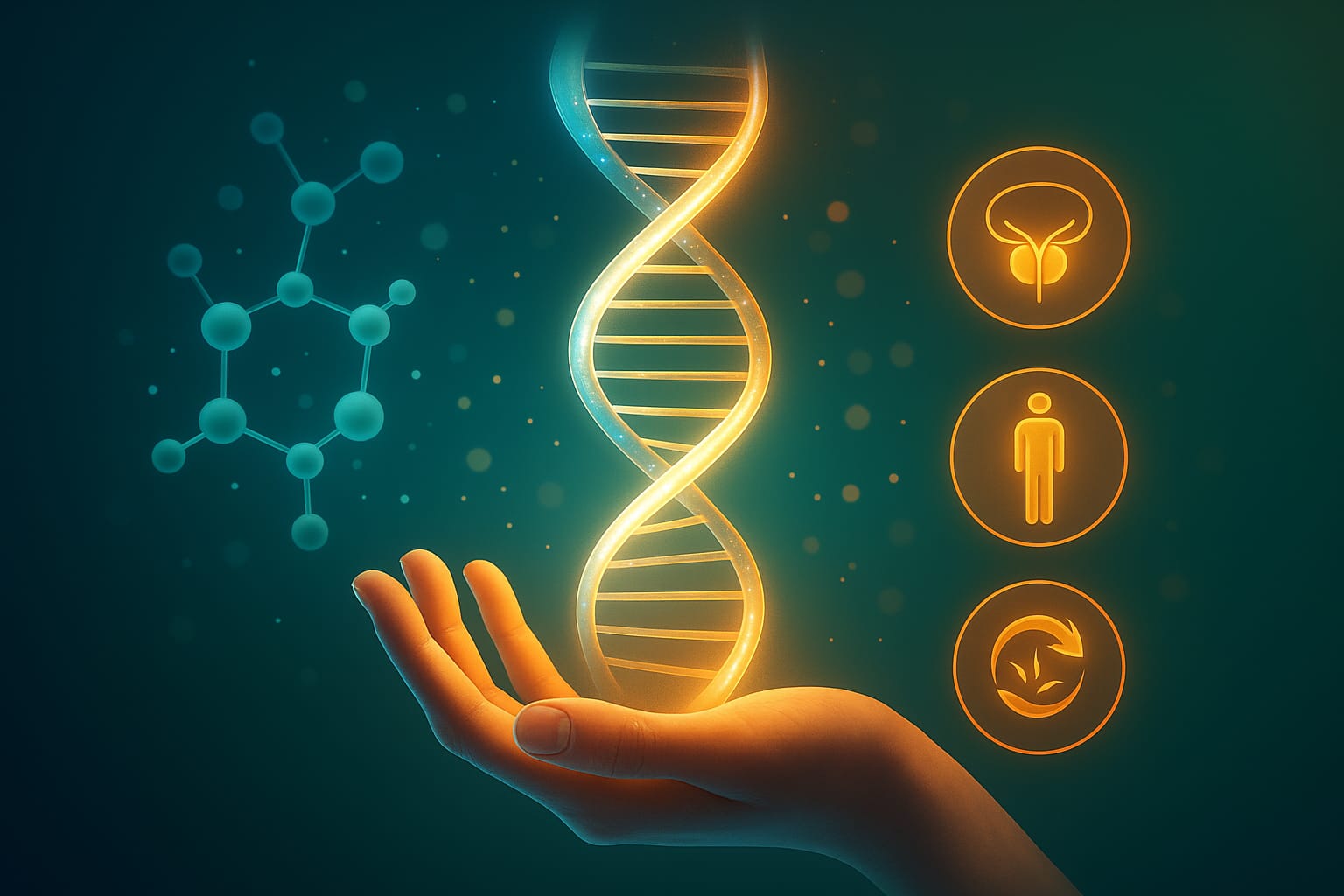Are you ready to unveil the secret to radiant and rejuvenated skin? If you’ve ever wished for a way to embrace youth’s vitality while harnessing science’s power, look no further.
Welcome to the world of GHK-cu Peptide – a remarkable discovery that blends beauty and science in perfect harmony. As we journey through this article, you’ll unlock the captivating potential of GHK-Cu peptide, exploring its multifaceted benefits and profound impact on skin health.
Let’s first have a look at the introduction of GHK-cu peptide.
Part 1. What is GHK-cu?
The human GHK tripeptide was discovered in 1973 in human albumin. It has a high affinity for copper ions and readily forms a copper complex or GHK-Cu.
The human GHK-Cu (glycyl-l-histidyl-l-lysine) is a small, naturally occurring tri-peptide. It is present in human plasma and also can be released from the tissues in case of an injury.
GHK-Cu is a protective and regenerative ingredient widely used in skin and hair products.
GHK-Cu can:
- Cause Tightening of loose skin and reverse thinning of aged skin
- Repair protective skin barrier proteins
- Improve overall skin appearance
- Stimulate wound healing
- Protect skin cells from UV radiation
- Increases hair growth and thickness; also, it enlarges hair follicle size
- GHK-Cu also supports angiogenesis and nerve outgrowth
The paper reviews the regenerative actions of the GHK-Cu peptide in human skin. Also reveals possible mechanisms behind these actions.
That was a brief introduction to GHK-Cu; before heading towards its benefits, let’s look at its structure.
Part 2. Structure of GHK-Cu
The molecular structure of GHK-Cu peptide has been extensively studied using X-ray crystallography and other methods such as titration, etc.
- In the GHK-Cu complex, the Cu (II) ion is linked by the nitrogen from the histidine side chain.
- Another nitrogen from glycine and the amide nitrogen of the glycine-histidine peptide bond also coordinate with the Cu ion.
- According to a recent study, the oxygen atom from the carboxyl group of the neighboring complex also serves as a coordinating ligand for Cu(II).
- Many researchers proposed that GHK-Cu complexes can form binary and ternary structures.
- It involves the amino acid histidine and the copper binding region of the albumin molecule.
The suppression of copper (II) redox activity has been confirmed upon the complexation of copper ions with the GHK tripeptide.
It allows the delivery of nontoxic copper into the cell.

Having grasped the structural complexities, let’s unveil GHK-cu benefits.
Part 3. GHK-cu Peptide Benefits
Exploring the power of GHK-Cu peptide uncovers a wide range of amazing advantages. It has a strong impact on different parts of health.
It helps with things like healing wounds and is a powerful antioxidant. GHK-Cu’s flexible abilities offer the potential to boost energy and bring back a sense of youthfulness.
(1). Wound Healing and Tissue Remodeling
Pickart found that GHK-Cu accelerates wound healing and possesses anti-inflammatory effects. Further studies by Borel and Maquart revealed that GHK and GHK-Cu stimulate collagen synthesis in fibroblasts.
From several studies, it was found that
- GHK-Cu’s properties include boosting collagen I and III expression in wound healing.
- GHK-Cu promoted collagen and glycosaminoglycan synthesis and breakdown.
- The copper-binding activity of GHK is crucial for wound healing and skin remodeling, distinguishing GHK-Cu’s effects.
- mRNA analysis demonstrated GHK-Cu’s role in enhancing collagen, dermatan sulfate, chondroitin sulfate, and decorin production.
- GHK-Cu’s impact on wound healing also involves enhanced circulation, antioxidant enzyme activity, and epithelization in animal experiments.
(2). Improves Acute lung injury in mice
Acute lung injury (ALI) is a disorder of acute inflammation and tissue injury. The loss of alveolar-capillary membrane integrity and excessive transepithelial neutrophil migration characterize it. Also, it causes the release of pro-inflammatory and cytotoxic mediators.
GHK-Cu administration demonstrated a protective effect in a mouse LPS-induced acute lung injury (ALI) model. A study was performed, and the following results were obtained.
- Mice were pretreated with GHK-Cu before being exposed to LPS.
- Lung sections from LPS-exposed mice showed many changes, including alveolar wall thickness and hemorrhage.
- GHK-Cu treatment did not affect inflammatory cytokine levels or histological changes compared to the control group.
- No toxicity was observed following GHK-Cu treatment.
- The ALI model was successfully established based on the morphological changes in lung tissue.
- GHK-Cu pretreatment significantly lessens the pathological changes in lung tissues, reducing the lung injury score.
GHK-Cu’s protective effect against LPS-induced ALI was indicated by alleviating lung injury symptoms.

(3). Anti-Oxidant and Anti-Inflammatory Actions of GHK-cu Peptide
Animal experiments demonstrate GHK treatment’s ability to increase antioxidant enzyme levels. Following are the results of the experiments.
- GHK showcases strong antioxidant and anti-inflammatory properties.
- GHK effectively neutralizes harmful free radicals produced during lipid peroxidation.
- Protection against UV radiation-induced damage is observed in skin keratinocytes due to GHK treatment.
- GHK’s potency in inhibiting Cu(2+)-dependent oxidation of LDL surpasses that of superoxide dismutase (SOD1).
- GHK binds to lipid peroxidation by-products, including acrolein and 4-hydroxynonenal, for protective effects.
- GHK-Cu(2+) complex reduces iron release from ferritin by 87%, hampering the catalyst for lipid peroxidation and free radical production.
- Regulation of iron release holds significance in managing iron metabolism-related conditions, such as neurological damage.
With a thorough exploration of GHK-Cu’s diverse benefits, we now turn your attention to its remarkable impact on skin health and rejuvenation.
Part 4. GHK-cu Peptide and Skin Health
GHK is a well-researched, cost-effective compound with beneficial effects on various tissues and systems. It has been utilized in human anti-aging and cosmetic products for many years without encountering any negative impacts.
It can be easily incorporated in creams, liposomes, dermal patches, or delivered through microneedles. Several clinical studies confirmed GHK-Cu’s ability to improve the appearance of aging skin.
A facial cream containing GHK-Cu was applied over 12 weeks in 71 women with mild to advanced signs of photoaging.
- It increased skin density and thickness, reduced laxity, improved clarity, and reduced fine lines and the depth of wrinkles.
GHK-Cu eye cream was applied for 12 weeks to around the eye area of 41 women with mild to advanced photodamage.
- It led to decreased lines and wrinkles, enhancement in overall appearance, and increased skin density and thickness.
GHK-Cu was applied to thigh skin for 12 weeks, which resulted in the following.
- It improves collagen production in 70% of the women treated. Also, it strongly stimulated dermal keratinocyte proliferation.
When exposed to human adult dermal fibroblasts, GHK-Cu at concentrations of 0.01, 1, and 100 nM stimulated the synthesis of elastin and collagen.
Now that we’ve unveiled the transformative impact of GHK-Cu on skin health let’s explore where you can access the finest GHK-Cu products.
Part 5. Where to Buy the Right GHK-cu?
Looking to experience the incredible benefits of GHK-Cu peptide for yourself? Look no further than NuScience Peptides, your trusted source for premium GHK-Cu products. At NuScience Peptides, they offer top-notch products and exceptional service that prioritizes your satisfaction.
Why Choose NuScience Peptides?
● Same Day Shipping
Enjoy the convenience of receiving your order swiftly. They offer same-day shipping on all orders of in-stock items placed before 12:00 p.m. EST.
● Dedicated Service
Their cooperative team is always ready to assist you. Whether you have questions or requests or need guidance, they’re here to provide a seamless experience.
● Free Shipping
They offer free shipping over all orders totaling $200 or more, so you can save while enjoying top-quality products.
● Purist Quality
They take pride in ensuring the utmost purity of their products. Every item they offer undergoes rigorous lab testing and is certified for the highest possible purity.
GHK-cu Peptide from NuScience Peptides
Experience the difference between high-quality peptides combined with exceptional service. Join countless satisfied customers who have made NuScience Peptides their go-to source for premium peptides.
Conclusion
In the realm where beauty meets science, GHK-Cu peptide is a remarkable ally for radiant skin. Its multifaceted benefits, from wound healing to anti-aging properties, illuminate its transformative potential.
As you embark on your journey to harness the power of GHK-Cu, consider embracing NuScience Peptides as your trusted source for premium products. Experience the fusion of quality and care, and unlock the secret to timeless skin health today.
DISCLAIMER
The information provided in this article is only for educational and research purposes. It is not intended to diagnose, treat, cure, or prevent medical conditions. The content should not be considered medical advice or a substitute for professional consultation. Always consult a qualified healthcare provider before making any changes to your health practices based on the information presented.
References
Park, J.-R., Lee, H., Kim, S.-I., & Yang, S.-R. (2016). The tri-peptide GHK-Cu complex ameliorates lipopolysaccharide-induced acute lung injury in mice. Oncotarget, 7(36), 58405–58417. https://doi.org/10.18632/oncotarget.11168
Pickart, L., & Margolina, A. (2018). Regenerative and protective actions of the ghk-cu peptide in the light of the new gene data. International Journal of Molecular Sciences, 19(7). https://doi.org/10.3390/ijms19071987
Pickart, L., Vasquez-Soltero, J. M., & Margolina, A. (2012). The human tripeptide ghk-cu in prevention of oxidative stress and degenerative conditions of aging: Implications for cognitive health. Oxidative Medicine and Cellular Longevity, 2012. https://doi.org/https://doi.org/10.1155/2012/324832
Pickart, L., Vasquez-Soltero, J. M., & Margolina, A. (2015). GHK-Cu may Prevent Oxidative Stress in Skin by Regulating Copper and Modifying Expression of Numerous Antioxidant Genes. Cosmetics, 2(3), 236–247. https://doi.org/10.3390/cosmetics2030236




Permalink